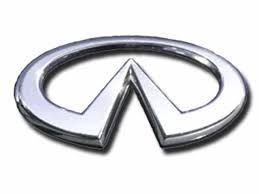G37x Sedan AWD V6-3.7L (VQ37VHR) (2010)
/Page-1395001.png)
Seat Belt Retractor: Testing and Inspection
Rear Seat Belt
REAR SEAT BELT
SEAT BELT RETRACTOR : Inspection
AFTER A COLLISION
WARNING:
Inspect all seat belt assemblies including retractors and attached hardware after any collision.
NISSAN/INFINITI recommends that all seat belt assemblies in use during a collision be replaced unless the collision was minor and the belts
show no damage and continue to operate properly. Failure to do so could result in serious personal injury in an accident. Seat belt assemblies
not in use during a collision should also be replaced if either damage or improper operation is noted. Seat belt pretensioners must be replaced
even if the seat belts are not in use during a frontal collision in which the air bags are deployed.
Replace any seat belt assembly (including anchor bolts) if:
-
The seat belt is in use at the time of a collision (except for minor collisions and the belts, retractors and buckles show no damage and continue to
operate properly).
-
The seat belt is damaged in an accident (i.e. torn webbing, bent retractor or guide, etc.).
-
The seat belt attaching point is damaged in an accident. Inspect the seat belt attaching area for damage or distortion and repair as necessary before
installing a new seat belt assembly.
-
Anchor bolts are deformed or worn out.
-
The seat belt pre-tensioners must be replaced even if the seat belts are not in use during the collision in which the air bags are deployed.
PRELIMINARY CHECKS
1. Check the seat belt warning lamp/chime for proper operation as follows:
a. Turn ignition switch ON. The seat belt warning lamp should illuminate. Also, the seat belt warning chime should sound for about six seconds.
b. Fasten driver seat belt. The seat belt warning lamp should turn off and the chime (if sounding) should stop.
2. If the air bag warning lamp is blinking, conduct self-diagnosis with CONSULT-III and air bag warning lamp. Refer to See: Air Bag
Systems/Testing and Inspection/Reading and Clearing Diagnostic Trouble Codes/Diagnosis Description.
3. Check that the seat belt retractor, seat belt anchor and buckle bolts are securely attached.
4. Check retractor operation:
a. Fully extend the seat belt webbing and check for twists, tears or other damage.
b. Allow the seat belt to retract. Ensure that webbing returns smoothly and completely into the retractor. If the seat belt does not return smoothly,
wipe the inside of the loops with a clean paper cloth. Because dirt build-up in the loops of that upper anchors can cause the seat belts to retract
slowly.
c. Fasten the seat belt. Check the seat belt returns smoothly and completely to the retractor. If the webbing does not return smoothly, the cause
may be an accumulation of dust or dirt. Use the "SEAT BELT TAPE SET" and perform the following steps.
5. Repeat steps above as necessary to check the other seat belts.
SEAT BELT RETRACTOR ON-VEHICLE CHECK
Emergency Locking Retractors (ELR) and Automatic Locking Retractors (ALR)
NOTE:
All seat belt retractors are Emergency Locking Retractors (ELR) type. In an emergency (sudden stop) the retractor will lock and prevent the webbing
from extending any further. All 3-point type seat belt retractors except the driver's seat belt also have an Automatic Locking Retractors (ALR) mode.
The ALR mode (also called child restraint mode) is used when installing child seats. The ALR mode is activated when the seat belt is fully extended.
When the webbing is then retracted partially, the ALR mode automatically locks the seat belt in a specific position so the webbing cannot be extended
any further. To cancel the ALR mode, allow the seat belt to fully wind back into the retractor.
Check the seat belt retractors with the following test(s) to determine if a retractor assembly is operating properly.
ELR Function Stationary Check
Grasp the shoulder webbing and pull forward quickly. The retractor should lock and prevent the belt from extending further.
ALR Function Stationary Check
1. Pull out the entire length of seat belt from retractor until a click is heard.
2. Retract the webbing partially. A clicking noise should be heard as the webbing retracts indicating that the retractor is in the Automatic Locking
Retractors (ALR) mode.
3. Grasp the seat belt and try to pull out the retractor. The webbing must lock and not extend any further. If
NG, replace the retractor assembly.
4. Allow the entire length of the webbing to retract to cancel the automatic locking mode.
ELR Function Moving Check
